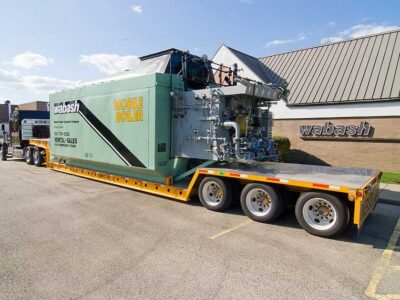It’s hard to understate how much value a great inventory system has in business. It helps you find and ship products fast to your customers. Despite that, 43% of small businesses don’t have a strategy to manage their inventory.
With how critical your supply chain is to the success of your business, you can’t afford to do without a warehouse management strategy. Keep reading to learn how to improve your warehouse management skills.
Manage Your Inventory Layout
Do you have any items that are commonly sold together? If so, you don’t want your pickers walking back and forth to those items all the time.
The same is valid for items you sell often. Are your popular items at the end of your warehouse where it takes forever to walk to? If people have to walk far constantly, it reduces the number of things they can pick every day.
An optimized inventory layout will help reduce travel time. Keep combination items grouped closely and put commonly purchased items in front where it doesn’t take much time to travel.
Track Your Best Sellers
There’s nothing worse than running out of a popular product when you get a lot of demand. You rely on your best sellers to make up for products that don’t sell as well. If you run into this situation, the chances are good your business will lose money.
You need to know what volume to expect from your best sellers to stop this from happening. Keep track of historical trends for those products to see how much you need to fulfill regular orders.
Of course, you may experience an increase in demand in the future. Popular products are better to stock up on, so always carry enough extra to handle any excess demand you experience.
Give Your Team Tools
If all your warehouse workers have is ladders and other manual labor tools, they aren’t going to be very productive. This is even truer when you have a large warehouse. The more time you spend manually doing work, the less effective you are.
Invest in the tools necessary for your workers to perform their best. A forklift, for instance, can help you place and retrieve pallets of products.
Scooters are another option for some warehouses. If your team carries small goods and travels far, a scooter will help them travel more distance and get more done.
Every situation is unique, so examine your needs and find the tools that make work easier.
Perform Inventory Audit
Even with the best systems in place, you and your team will still make mistakes. Most of these mistakes won’t be a big deal and cause problems. However, there are times when you’ll make an error that causes your whole business to stuffer.
One of these problems is when you have a bad inventory count. People will put the wrong number in a computer system or fail to scan leaving products. That leaves you with inaccurate counts of your inventory.
While you can’t completely stop this from happening, you can discover the problem before it turns into a big issue. Run regular audits on your inventory to ensure you have an accurate count.
Create Standard Procedures
Unless you have a defined system to handle work, your workers will develop their own way of doing things. Even if you still get the job done, those systems may not be the most effective way to handle tasks.
A standard procedure will keep everyone on the same page and let you optimize every work task. Get employee feedback on what they believe is the best way to do things and create procedures out of those best practices.
These procedures will keep everyone on the same page and make onboarding new employees easier. On top of that, you can collect data about performance and optimize these procedures to get more work done during the day.
Use Technology
You have many more tools to handle warehouse management today than pen and paper. Countless software solutions automate business processes and help manage everyday inventory management tasks.
Look into the warehouse management systems on the market and see what features are beneficial to your business. Many offer free trials, so make sure you test all your options.
Once you find a feature set you like, check reviews to see if there are any issues to look out for. Once you set up your program, you’ll see the productivity of your warehouse skyrocket.
Check out this article to learn more about using technology to take care of previously manual processes.
Monitor Your Vendors
A well-oiled warehouse management system is all well and good. However, you have more concerns than how you operate your supply chain. If you don’t have reliable vendors, it’s hard to keep up with orders.
Constantly monitor the performance of the people manufacturing your products. If you see a vendor start slipping, reach out to them to see what’s going on and what you can do to return to normal.
It also pays to have backup vendors in place for emergencies. This will help you return to normal more quickly when you experience vendor problems.
Don’t Underestimate the Importance of Warehouse Management
You can’t get your products to your customers on time if you don’t have a great supply chain, and a great warehouse management system is where that starts. An inefficient system will cause slowdowns in finding and shipping products. Use the guide above to maximize your system to optimize warehouse productivity.
Are you interested in more tips that will help you optimize the other parts of your business? Read more tips on the blog.












Comments